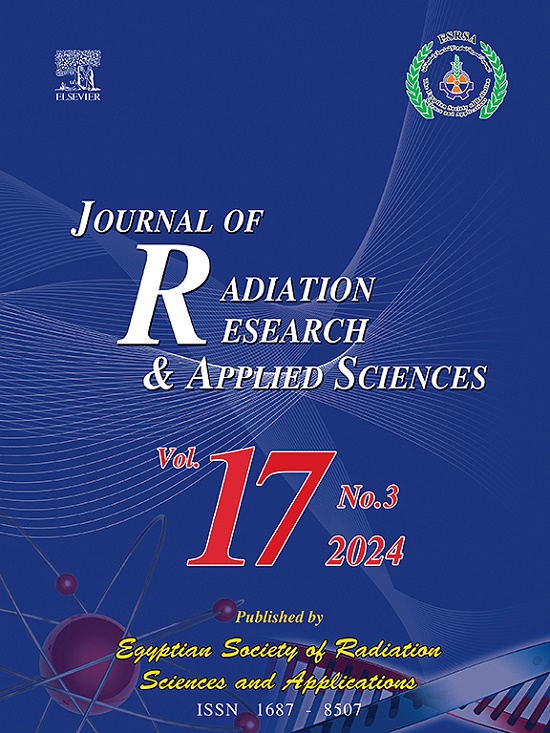一种新的改进正弦-威布尔分布用于动态结构的医疗数据建模
IF 1.7
4区 综合性期刊
Q2 MULTIDISCIPLINARY SCIENCES
Journal of Radiation Research and Applied Sciences
Pub Date : 2025-03-20
DOI:10.1016/j.jrras.2025.101427
引用次数: 0
摘要
生物医学数据往往呈现出偏态、峰度和高变异性等复杂结构,这对传统的统计模型提出了挑战。为了充分应对这些挑战,非对称统计模型是必不可少的。本文提出了一种新的由sin - g变换形成的统计分布族。这个家族将被称为Modified sin - g (MoS-G)家族。新的MoS-G家族被用来提出修正正弦威布尔分布(mos -威布尔),作为经典威布尔分布的扩展,它包含了更多种类的数据特征。其目的是集成比传统威布尔分布更广泛的数据特征。MoS-Weibull分布在偏度和峰度方面表现出增强的可变性,使其适合捕获不同的形状。这些形状包括反j形、右偏、重尾和左偏分布,通常在生物医学数据中发现。利用极大似然法进行参数估计过程。在各种环境下进行的仿真试验表明,参数估计是可靠的。三个真实的生物数据集证明了MoS-Weibull分布的实际适用性。这些数据集是病理临床记录、COVID-19和急性骨癌数据的死亡率统计。本研究的结果表明,在捕捉这些数据集中存在的复杂模式和可变性的能力方面,MoS-Weibull分布比其他模型具有优势。本研究结果表明,MoS-Weibull分布是分析复杂生物医学数据的有效工具。它还为改进生物医学研究领域的统计建模方法提供了重要的见解和工作。本文章由计算机程序翻译,如有差异,请以英文原文为准。
A new modified Sine-Weibull distribution for modeling medical data with dynamic structures
Biomedical data often exhibits complex structures characterized by skewness, kurtosis, and high variability, which pose challenges for traditional statistical models. To adequately address these challenges, asymmetrical statistical models are essential. This paper proposes a novel family of statistical distributions formed by Sine-G transformations. The family will be known as the Modified Sine-G (MoS-G) family. The new MoS-G family is utilized to propose the Modified Sine-Weibull (MoS-Weibull) distribution, as an extension of the classical Weibull distribution, which encompasses a greater variety of data features. The aim is to integrate a wider range of data features than the conventional Weibull distribution. The MoS-Weibull distribution demonstrates enhanced variability regarding skewness and kurtosis, rendering it appropriate for capturing diverse shapes. The shapes include reversed-J-shaped, right-skewed, heavy-tailed, and left-skewed distributions, commonly found in biomedical data. The maximum likelihood method is utilized to carry out the process of parameter estimation. It has been demonstrated through simulation tests conducted in various environments that the parameter estimates are reliable. Three real biological datasets demonstrate the practical applicability of the MoS-Weibull distribution. These datasets are the mortality statistics for the pathological clinic records, the COVID-19, and the acute bone cancer data. The results of this study suggest that the MoS-Weibull distribution has an edge over other models in terms of its capacity to capture the intricate patterns and variability that are present in these datasets. The findings of this study demonstrate that the MoS-Weibull distribution is an efficient tool for analysing complex biomedical data. It also offers significant insights and works to improve statistical modeling approaches in the field of biomedical research.
求助全文
通过发布文献求助,成功后即可免费获取论文全文。
去求助
来源期刊

Journal of Radiation Research and Applied Sciences
MULTIDISCIPLINARY SCIENCES-
自引率
5.90%
发文量
130
审稿时长
16 weeks
期刊介绍:
Journal of Radiation Research and Applied Sciences provides a high quality medium for the publication of substantial, original and scientific and technological papers on the development and applications of nuclear, radiation and isotopes in biology, medicine, drugs, biochemistry, microbiology, agriculture, entomology, food technology, chemistry, physics, solid states, engineering, environmental and applied sciences.
 求助内容:
求助内容: 应助结果提醒方式:
应助结果提醒方式:


